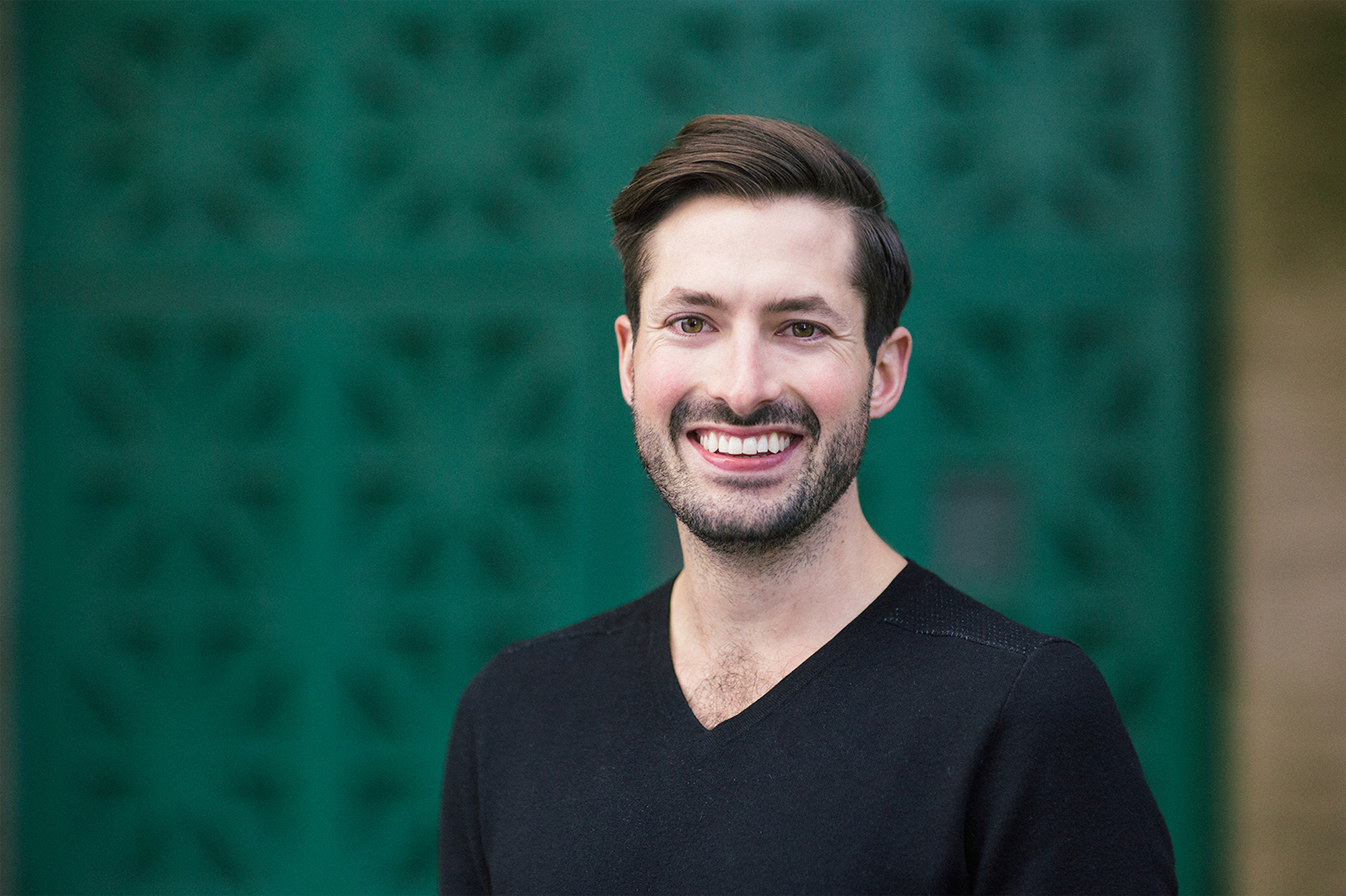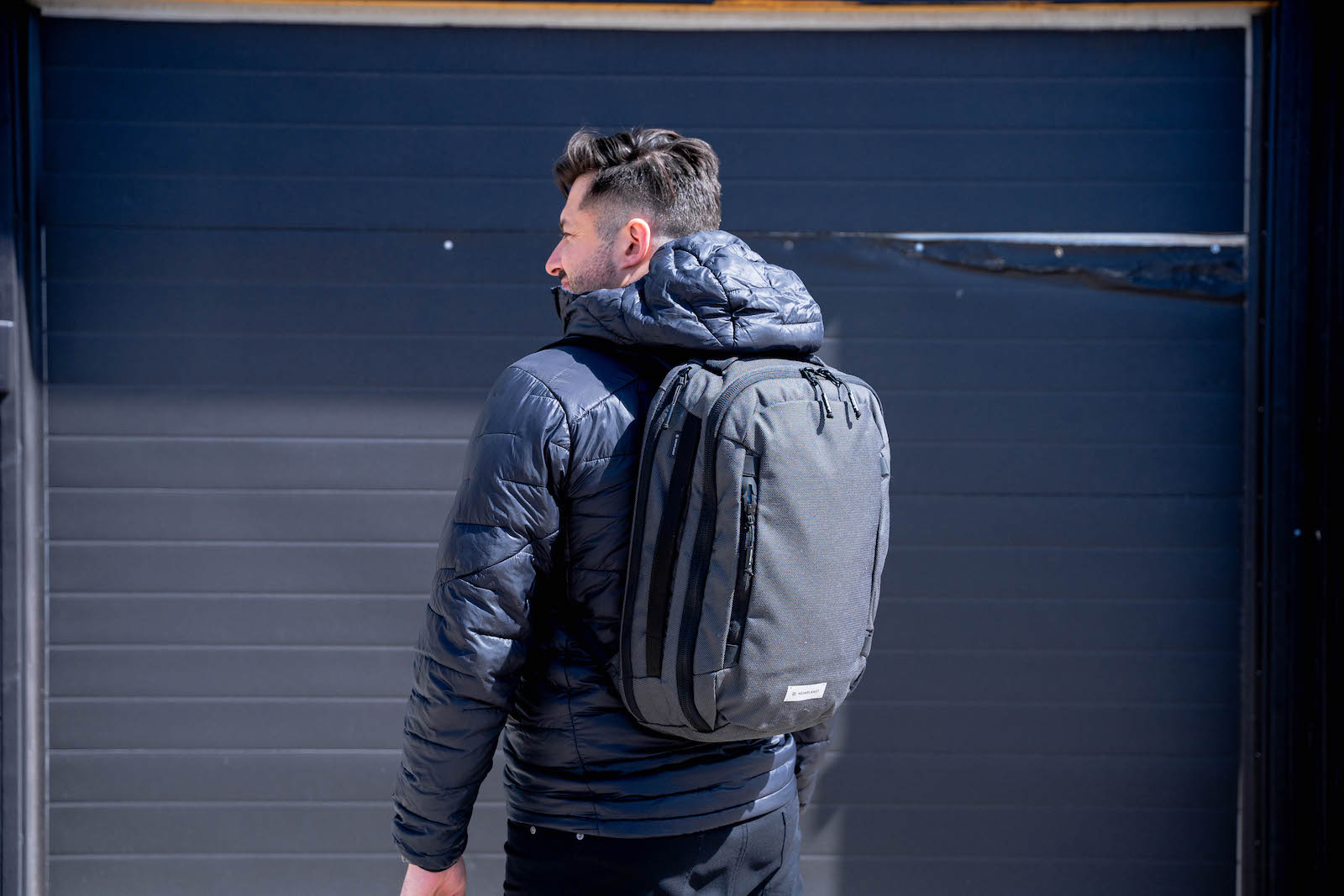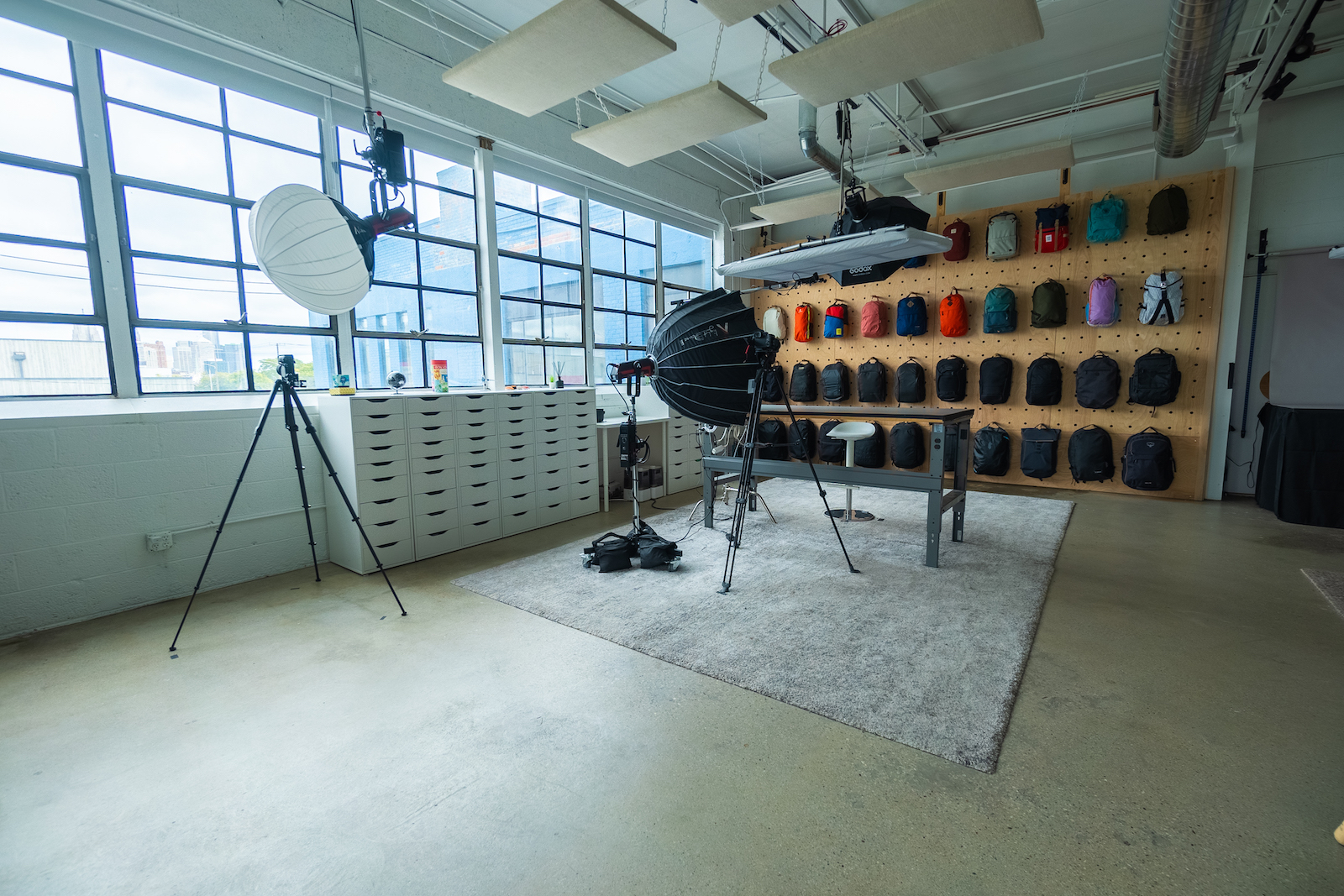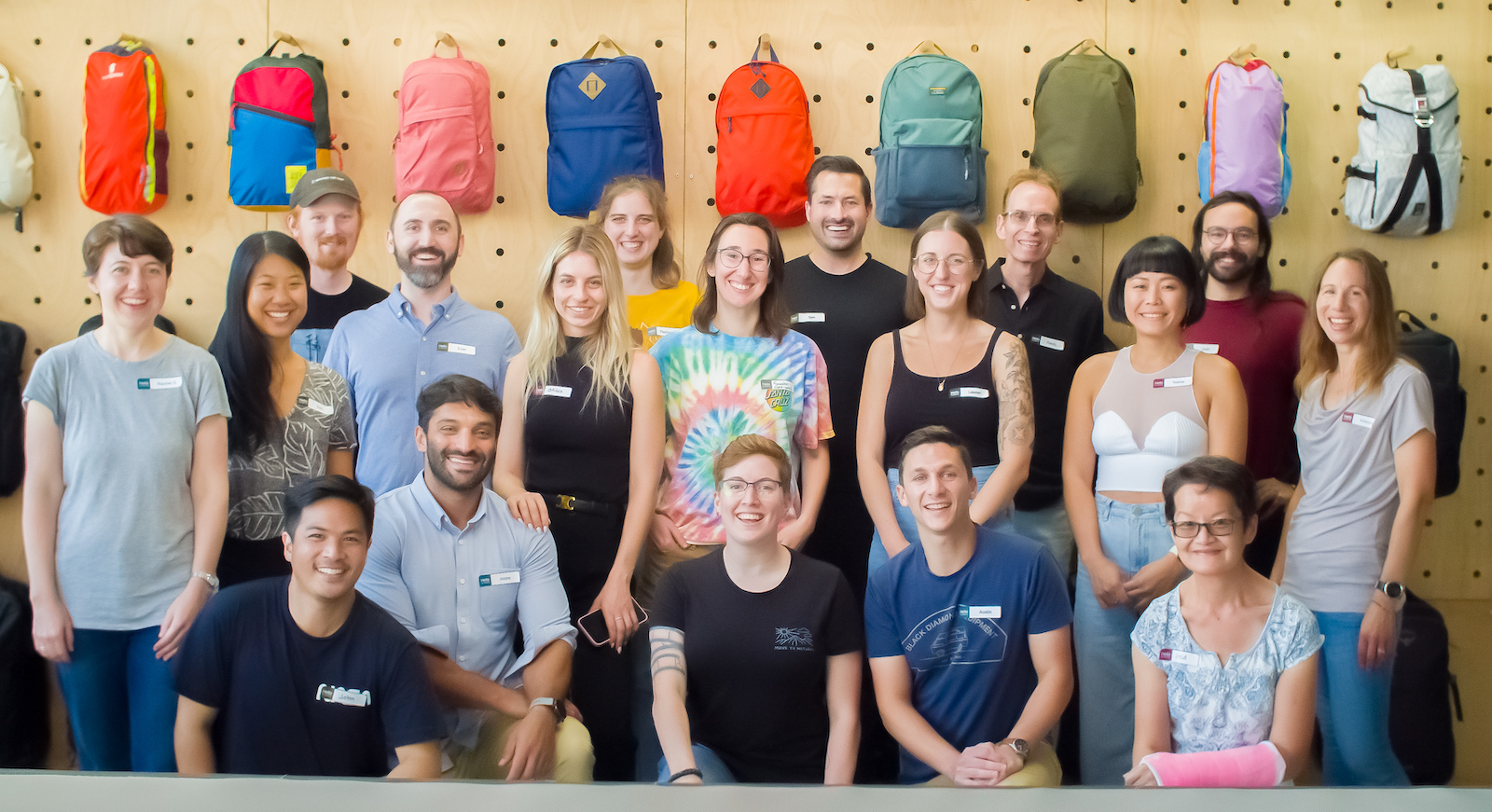“As long as you're passionate, it can pull you through”
We spoke to Tom Wahlin, founder of travel gear reviews site Pack Hacker, about the shift from designer to entrepreneur and the power of connecting with someone individually.

Pack Hacker founder Tom Wahlin © Pack Hacker
“I'm a former front-end dev and UI designer; after 11 years of UI design, I got the itch to start my own business,” begins Tom Wahlin, founder of Pack Hacker. “I had a bunch of ideas that were really bad and didn't work — so I went travelling!” While on the road, Tom wrote an article on Medium about everything he was traveling with; ultimately, the article about the backpack he was using, the GORUCK GR2, shifted the trajectory of his career.
“I lived out of that bag for two years,” he remembers. “One day, I laid everything out and wrote an article on everything I carried with me, because that's pretty much all I had to my name at that point.” The article went viral on Medium and Tom noticed an opportunity: “It's one of those things where I just did it for myself and for fun, and people ended up liking it,” he recalls.
 Pack Hacker founder Tom with a backpack © Pack Hacker
Pack Hacker founder Tom with a backpack © Pack Hacker
Tom thought the success was perhaps linked to the lifestyle of living out of one bag, but then he started doing individual backpack reviews and people liked those too. “Somehow, now we're here!” laughs Tom. “We've got a team of six here in Detroit and then two or three contractors and we're building and growing.”
Nowadays, when Pack Hacker launches a video, just on a single backpack, around 1000 people view it in the first day. “It's pretty cool that there are people out there who are waiting for these videos to come out. You get a lot of smart people commenting; I think our audience really holds us accountable, which I appreciate. It's been so cool to build this community,” he smiles.
Getting up and running
“Because I’m a designer-developer by trade, I was very excited about doing the branding, the design system, the logos, the website for the company. Then I launched it and it didn't really have any traffic!” Tom confesses. He has been focusing on the wrong aspects of the business. “I had all my colleagues messaging me saying, ‘Hey, this is a pixel off here, you’ve got to fix this!’ and I hadn't realized it didn’t matter.
“Becoming an entrepreneur after being a designer is such a perspective shift, because you start to focus on what really matters for the business. I don't think I've lost the design and development ‘kick’, but it was a rude awakening! I spent all this time on the branding, the logo. Then, when you launch, it's like, ‘Okay when are the people coming?’!” Tom acknowledges that, fortunately, the company’s design style was “more mature” than the business was: “I think that helped prop us up a little bit in the early days. I'm a sucker for good branding!”
When the Medium article started getting significant traffic, Tom realized he could monetize this information, albeit in small amounts at first. “I applied to the Amazon affiliate program, linked up all the mentions in the Medium article, and it started generating money. It was like, ‘Wow cool, I made 50 cents! I can buy an eighth of a coffee!’” he jokes.
 The studio © Pack Hacker
The studio © Pack Hacker
“It was just me at the beginning and I was working 12-hour days, seven days a week for the first two years. It was a grind, but it was easy because I was so excited about it. It felt natural; I felt inspired,” he continues. But also he mentions that the situation was precarious as he would spend a lot of time making a video, not knowing if people were going to like it. “You spend all this time creating this content and you don't get a ton of feedback in the beginning. You have to have your passion drive you through to continue building it.”
Tom says that, especially in the early days, getting negative comments from people on YouTube could hurt for weeks. “I've gotten past that a little but I remember one that was funny. I still remember that username that popped up in my email and they said: ‘I'm not against humor, but I am against such a horrible attempt at it.’ That comment is so trivial and so dumb, but I was down and out for a week! I thought, ‘I'm not doing this anymore. I'm working 12 hours a day and no one's watching this stuff!’”
Tom explains he felt maybe 10% of his content was working. “You take that 10% and you just keep building. As long as you're passionate, it can pull you through. I don't think it makes sense to start a content business with an exit strategy,” he muses.
The membership business
Tom and his team had plans, which they formalized in December 2019, to launch their membership in April 2020. Of course, covid hit, and travel stopped, but they still had a decent number of signups (around 100) when they launched. “I think that those people understood it was going to be a tough few years for us and they were excited to get on the Pack Hacker bandwagon and support us,” he says. “Them helping us out was definitely a boost for us to get through those challenging times so we’re super thankful for the community that we have.”
People were clearly happy to invest in Pack Hacker financially as well as with their time. “I love that people like us enough to give us money,” he says. “What I'm striving to do with the team, every day, is just making it worth it to be a Pack Hacker member. When it comes to the Pack Hacker Pro membership, you have a private community of people. It's got a different feel than Reddit. I love Reddit but our community is more tight-knit. You get to know people; you get to know their preferences.”
Tom explains that people who one-bag travel just have that ‘optimization brain’. Sometimes they're engineers or work in technical industries, or they just travel a lot. “If you're a business traveler, traveling once or twice a week, you just need to have your systems dialed down,” he adds.
“We get into some really interesting conversations. We’ve got a great group of people inside the membership,” Tom continues. I posed a question in our Discourse the other day about battery banks as we're always looking for the smallest, lightest ones for the most milliamp hours. We had someone jump in who was a battery engineer and they were sharing all this information. It’s mind-blowing to me that someone like that is a Pack Hacker fan. It's very humbling. It was so cool to see them bring their expertise into the conversation and teach other people.”
 A Pack Hacker event © Pack Hacker
A Pack Hacker event © Pack Hacker
What does the membership entail? “If you're a Pro member, you get a Hangout video with us and we tell you exactly how we pack,” Tom explains. “Everyone's like, ‘There are 60 items — how do you fit them in this bag?’ and we'll show them in the membership." Pack Hacker Pro also features member discounts: “If you end up buying a certain number of items from one of our packing lists, you can usually pay for the membership with what you save.”
Perhaps the cornerstone of the Pack Hacker membership is exclusive content; namely packing lists and tools.“We just launched a packing list tool where you, as a member, can go in and put together your own list and share it with the community. You can talk about it and figure out ways to improve it. That’s my thing I'm working on and I'm really excited about it!”
The packing list is the embodiment of Pack Hacker, Tom explains. It’s what launched the business and it's what the audience are interested in. If you sign up for free membership, you get access to the tool; if you're a Pack Hacker Pro member, you get additional features.
“I think we can bring a lot of value,” he continues. It's helpful for people that want to see the total weight of their bag and which airlines that the bag size and weight is compliant on. It'll match your data to every airline in the world and tell you whether or not you're going to be asked to pay the extra 90 bucks or whatever the ridiculous fee is! I would love for it to aid people with insurance claims if their bag does get lost. We're building the community around making things more helpful for people.”
Tips for membership
What tips would Tom give for someone looking to launch a membership? “I think Reed Hoffman, the founder of LinkedIn, said ‘If you aren't embarrassed when you launch your first product, then you waited too long to launch it.’ One thing that's beautiful about the world we live in now are no-code tools and plugins. You can get up and running really quickly, and figure things out as you go,” he says.
“When you're not that big, you have the blessing and the curse of no one caring!” Tom laughs. “You can mess up as much as you want in the early days. You can start finding things that work; you double down on them and you keep building from there.” Tom thinks of this in a positive, not negative way: “If you look back at your old work and you think, ‘That was bad!’ then you've gotten better. I can attest to that as a designer: looking back, some of my old work is pretty bad! I don't know how anyone hired me!”
Tom mentions he loves the business cartoon 'How to build a car' that shows people trying to put the parts together for a car in one go. “No one's happy until it's done. But the iterative way to do that lets you perfect small pieces. You build a skateboard first, and you put the handlebars on to make a scooter, then that turns into a bicycle. Then the bicycle turns into a motorcycle and finally the motorcycle turns into a car.”
Tom views membership and content in this way; just start with something small. “You get all this advice, and eventually it all cancels out. You just have to start at some point. If you are a perfectionist, start small, and then just add a little every week. Then all of a sudden you're going to have something that's a lot bigger. Anything's better than not starting at all. It's so hard to start. But once you get going, the momentum is different.”
Tom says what he loves about membership is the access to a crowd of people that already love what you're doing. “It adds excellent, smart, qualitative feedback, because people care about your brand,” he explains. “If they're shelling out money, they care about what you're doing.”
 Pack Hacker Pro members © Pack Hacker
Pack Hacker Pro members © Pack Hacker
He continues: “When you're publishing public content, it's easy to get lost in the numbers — ‘Oh, this has 40,000 views, cool. That's a football stadium filled twice over.’ Data is super helpful but it's very easy to get caught up in it. When you start to think about the actual humans that are consuming your content, it's dynamite!” He explains that having a group of people invested in you and your brand means that they bring their own feedback, ideas and passion to your community: “You get more invested in the community, they become more invested in you.”
Tom concludes that, as a creator, simple human-to-human interaction can really help. “A fan came in yesterday and I was walking him through our [over 1000] bags; we like to test them and keep them around to compare with new versions. It was so cool to walk him through this and ask, ‘What are you looking for? Do you like this?’ to narrow it down to find the perfect bag. That's what membership does: it lets you connect with someone individually — and helps you remember why you started doing this in the first place.
“The internet is just so big. If you're into something, there are chances are that someone else is into it too. If you're starting a membership, you're going to attract people that are like you. I love hearing about other Memberful customers, some of whom are tangential to our own business — shout out Stitchdown! Who would have thought that a community of people, who like wearing boots and seeing how they break in, could even be possible. You can rally some passionate people around that idea, just like with our one-bag travel community. It’s incredible.”
More information
Read more about the Pack Hacker Pro membership or check out Pack Hacker's guide to finding the best travel backpack.
Have an audience?
Customers like Mythical (28+ million subscribers) rely on Memberful to power their membership communities.
Get started for free